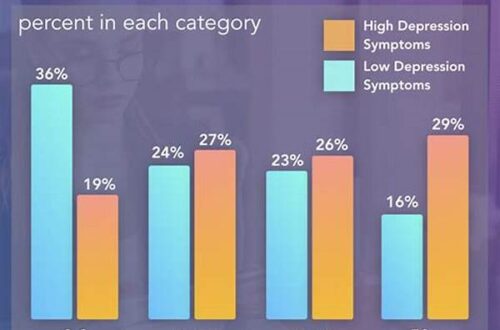Understanding the Need for Cross-Border Intelligence Collaboration
The realm of international security is replete with complex challenges, among which espionage remains a significant threat. Nations across the globe recognize the necessity for cross-border intelligence collaboration against spying to counteract these threats effectively. In recent years, the sophistication of spying techniques has escalated, making unilateral efforts insufficient. Cross-border collaboration enables countries to combine resources, expertise, and intelligence to identify and prevent espionage activities efficiently.
Countries establish collaborative frameworks to facilitate secure and efficient exchange of critical intelligence data. This cooperation allows nations to better anticipate and respond to malicious activities that transcend geographical boundaries. Moreover, cross-border intelligence collaboration against spying aids in building trust among allied countries, fostering a unified front against common adversaries. It is a proactive measure that not only enhances national security but also strengthens international peace and stability.
The success of any cross-border intelligence collaboration depends on establishing clear protocols and maintaining mutual respect among participating nations. Legal frameworks are integral in ensuring that the sharing of sensitive information complies with each country’s privacy laws and security policies. Strong diplomatic relations, supported by transparent and ethical practices, underpin these collaborations, making them an indispensable component of global security strategies.
Key Components of Effective Collaboration
1. Information Sharing Mechanisms: Establishing secure channels for information exchange is vital in cross-border intelligence collaboration against spying. These mechanisms ensure timely and accurate dissemination of intelligence data.
2. Legal and Ethical Standards: Adhering to international laws and ethical standards safeguards against potential abuses and ensures that the collaboration respects national sovereignties.
3. Joint Training Programs: Collaborative training initiatives enhance the capabilities of intelligence personnel, equipping them with the necessary skills and knowledge for effective spying deterrence.
4. Technological Integration: Leveraging advanced technologies and integrating them into collaborative efforts enable nations to better monitor and counter espionage activities.
5. Strategic Alliances and Partnerships: Building strategic alliances with international partners solidifies cooperative efforts and enhances effectiveness in addressing spying threats.
The Role of Technology in Intelligence Collaboration
In the fight against espionage, technology plays an indispensable role. Cross-border intelligence collaboration against spying relies heavily on advancements in cybersecurity, data analytics, and surveillance technologies. These technological tools enable nations to detect and disrupt espionage activities with greater precision and efficiency. Cybersecurity measures, in particular, are crucial in safeguarding sensitive information shared among countries involved in the collaboration.
The integration of cutting-edge surveillance technologies aids in real-time monitoring and analysis of suspicious activities. These technologies help intelligence agencies trace the origins and movements of potential threats, facilitating preemptive actions. Additionally, data analytics provides valuable insights by processing vast amounts of intelligence data, thereby enhancing decision-making processes in counter-espionage operations. As a result, technology acts as a force multiplier in cross-border intelligence collaboration against spying, strengthening collective security efforts.
Challenges and Solutions in Cross-Border Collaboration
Engaging in cross-border intelligence collaboration against spying is not without challenges. One major obstacle is the differing legal frameworks and political interests of participating countries. These discrepancies can lead to complications in information sharing and joint operations. To overcome this, establishing bilateral or multilateral agreements that delineate clear terms of engagement is essential.
Moreover, maintaining confidentiality while sharing sensitive information poses a significant challenge. Implementing robust cybersecurity protocols and utilizing encrypted communication channels can mitigate risks associated with data breaches. Trust and transparency are paramount, necessitating regular dialogues and confidence-building measures among collaborative partners. Establishing a common understanding of shared goals ensures a unified approach to counter-espionage activities, thereby overcoming the inherent challenges of cross-border collaboration.
Building Trust in International Intelligence Efforts
Trust forms the cornerstone of successful cross-border intelligence collaboration against spying. It is imperative that nations engaged in these collaborative efforts prioritize building and maintaining trust to enable seamless operations. Trust is cultivated through consistent communication, adherence to agreed-upon protocols, and unwavering commitment to mutual goals. Establishing joint oversight mechanisms can further strengthen trust among partner nations.
Regular evaluation and reassessment of collaborative strategies ensure that they remain relevant and effective in addressing evolving espionage threats. By fostering a culture of trust, nations can mitigate suspicions and enhance cooperation, making cross-border intelligence collaboration a formidable tool against spying endeavors. This trust-driven approach ultimately contributes to creating a resilient international security environment, equipped to handle contemporary and future challenges.
The Future of Cross-Border Intelligence Collaboration
As espionage tactics continue to evolve, so too must the strategies employed in counter-espionage efforts. The future of cross-border intelligence collaboration against spying hinges on adaptability and innovation. Embracing emerging technologies, such as artificial intelligence and machine learning, will play a crucial role in enhancing collaborative capabilities. These technologies offer new avenues for improving intelligence analysis and ensuring swift response to emerging threats.
Additionally, expanding collaboration to include private sector partnerships can provide access to advanced technologies and resources. As globalization continues to influence security dynamics, fostering inclusive collaborations that transcend traditional governmental boundaries becomes increasingly important. By embracing these future-focused strategies, cross-border intelligence collaboration can effectively counter spying activities and uphold international stability and security.
Summary of Cross-Border Intelligence Collaboration
In conclusion, cross-border intelligence collaboration against spying represents a pivotal component of modern international security frameworks. By pooling resources and expertise, nations can address the multifaceted threats posed by espionage more effectively. This collaboration provides a platform for collective action, facilitating timely and coordinated responses to spying activities. Such cooperative endeavors are instrumental in safeguarding national interests and enhancing global security.
The success of cross-border intelligence collaboration against spying relies on the continuous strengthening of trust and mutual understanding among participating nations. As technology advances and geopolitical landscapes shift, maintaining flexible and adaptable collaboration strategies is crucial. Through sustained efforts, countries can create a robust network of shared intelligence that fortifies the international community against spying threats, ensuring peace and stability in an interconnected world.





